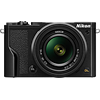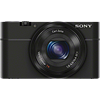Main
Model
Price
Advantages
launch
Announced
Body type
Camera subcategory
Sensor
Effective pixels
Max resolution
Sensor size
Sensor type
Processor
Image ratio w:h
Sensor photo detectors
Other resolutions
Image
ISO
White balance presets
Custom white balance
Image stabilization
Uncompressed format
Photography features
Minimum shutter speed
Maximum shutter speed
Maximum shutter speed (electronic)
Aperture priority
Shutter priority
Manual exposure mode
Subject / scene modes
Built-in flash
External flash
Continuous drive
Self-timer
Metering modes
Exposure compensation
Flash modes
AE Bracketing
WB Bracketing
Screen / viewfinder
Articulated LCD
Screen size
Screen dots
Touch screen
Screen type
Live view
Viewfinder type
Videography features
Resolutions
File Format
Videography notes
Microphone
Speaker
Optics & Focus
Focal length (equiv.)
Optical zoom
Maximum aperture
Autofocus
Digital zoom
Manual focus
Normal focus range
Macro focus range
Number of focus points
Physical
Weight (inc. batteries)
Dimensions
Environmentally sealed
Battery
Battery details
Battery Life (CIPA)
Storage
Storage types
Connectivity
USB
HDMI
Microphone port
Headphone port
Wireless
Wireless notes
Remote control
Other features
Orientation sensor
Timelapse recording
GPS
Samples
Videos
Summary
The DL18-50 highest resolution of 5584 x 3712 pixels (21 megapixels) is better than the Sony Cyber-shot DSC-RX100 maximum resolution of 5472 x 3648 pixels (20 megapixels). The Sony Cyber-shot DSC-RX100 offers better 14x digital and 3x optical zooms. The DL18-50 has more focus points than the Sony Cyber-shot DSC-RX100: 171 vs 25. More focus points means less risk of losing focus lock while following a moving object.
The Nikon DL18-50 has tilting display which will allow the photographer to take great selfie photos. The Sony Cyber-shot DSC-RX100 screen is better as it has more screen dots 1,228,800 in compare to 1,037,000 dots of the DL18-50 display. The higher dot count screen is better for reviewing images on your camera. The Nikon DL18-50 has a touch screen.
The Sony Cyber-shot DSC-RX100 has built-in flash. The Nikon DL18-50 supports external flash. It provides great control over the exposure and lighting of the subject in dim light or in bright light conditions when the camera owner needs to fill-flash. The Nikon DL18-50 is produced with built-in Wi-Fi which will help you to transfer photos wirelessly from a camera to a notebook. The Sony Cyber-shot DSC-RX100 battery life is better than the DL18-50 battery life. According to CIPA standards the camera owner will be able to capture 330 shots with the Cyber-shot DSC-RX100 and only 290 with the DL18-50. The Cyber-shot DSC-RX100 weighs 240g that is 125g lighter than the weight of the Nikon DL18-50.
Taking into account the above differences the Nikon DL18-50 becomes the best buy. Check the list of the best offers on Amazon.


